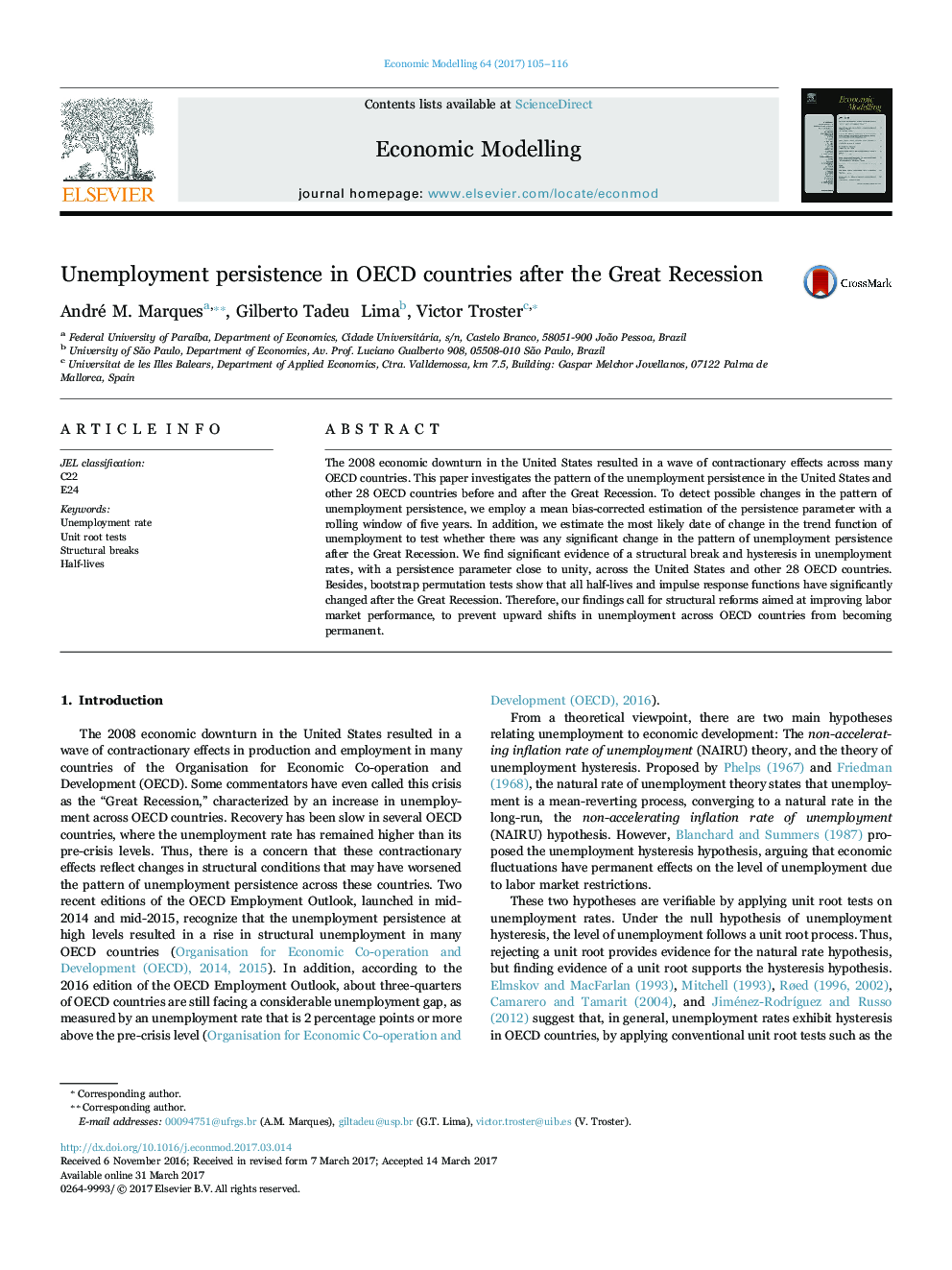| Article ID | Journal | Published Year | Pages | File Type |
|---|---|---|---|---|
| 5053137 | Economic Modelling | 2017 | 12 Pages |
â¢We analyze the pattern of unemployment persistence across 29 OECD countries.â¢We calculate an unbiased scalar measure of unemployment persistence.â¢We find evidence of a structural break and hysteresis in all unemployment rates.â¢All half-lives and impulse response functions changed significantly after the crisis.â¢Our findings suggest the importance of improving labor market performance.
The 2008 economic downturn in the United States resulted in a wave of contractionary effects across many OECD countries. This paper investigates the pattern of the unemployment persistence in the United States and other 28 OECD countries before and after the Great Recession. To detect possible changes in the pattern of unemployment persistence, we employ a mean bias-corrected estimation of the persistence parameter with a rolling window of five years. In addition, we estimate the most likely date of change in the trend function of unemployment to test whether there was any significant change in the pattern of unemployment persistence after the Great Recession. We find significant evidence of a structural break and hysteresis in unemployment rates, with a persistence parameter close to unity, across the United States and other 28 OECD countries. Besides, bootstrap permutation tests show that all half-lives and impulse response functions have significantly changed after the Great Recession. Therefore, our findings call for structural reforms aimed at improving labor market performance, to prevent upward shifts in unemployment across OECD countries from becoming permanent.
